Overview

Personal Project
Fruit Emporas


PC

2

3 months
Tasks & Responsibilities
-
Technical Game Design
-
Character Movement, Interactions & Animations
-
Multiplayer Integration
-
Sound & UI Design
-
-
General Game Design
-
Pitch Idea
-
Overall Game Balance & Project Management
-
-
Level Design
-
Designed 1 Procedural Generated level, with 2D tilling assets, using Tile Maps
-
-
Video Editing
Fruit Emporas - Gameplay Trailer
Fruit Emporas is a PC Multiplayer PvP game, for up to 2 players. The purpose of this game for each player is to collect as much fruit as possible before the time limit ends. This project was made for practicing networking integrations during my time at SAE Athens Institute, as well as producing procedural generated levels, which was optional.
The game was developed in Unity Engine for PC platforms, using Photon Pun 2 Integration for the networking of the game.
Technical Game Design
Character Movement, Interactions & Animations
The player's movement consists of 3 main mechanics: running, jumping and climbing on walls. Each of the movement states was made possible through simple 2D movement coding and had their own unique animations, which were separated from 2D sprite images by an external creator.
For the main objective of this project, players had to collect different fruits after colliding with them, giving different points based on the type. On top of that, players can collect life points to refill their health bar. Each of these objects had their own unique sounds, particle effects and animations, made inside the Unity Engine.
Lastly, in the level there are various traps, in which players may lose life points in a collision.
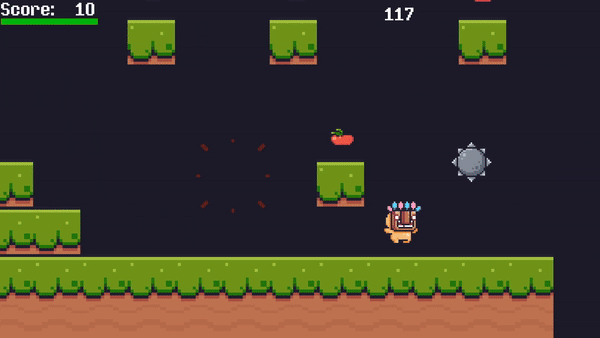
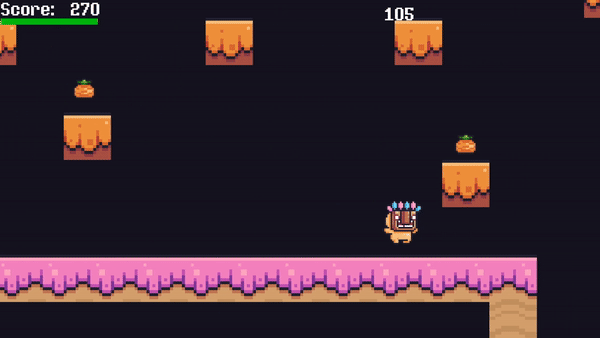
(1) Walking & Jumping Mechanics - (2) Climbing Mechanic
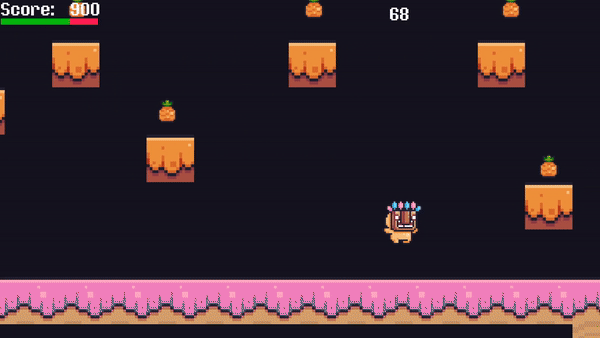
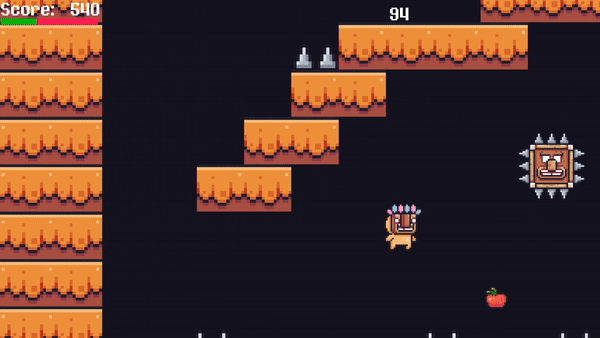
(1) Collecting point objects - (2) Colliding with traps
Multiplayer Integration
In terms of establishing the networking of the game, we used Photon Pun 2 integration from the Unity Asset Store. At the start of the game, when the Main Menu appears, players can choose their own nickname, in order to establish a connection to the network of the game. After that, players can create their own private room or search for an existing one, which is created by other players.
The whole flow was pretty simple from the perspective of the development, as Photon Pun 2 had great documentation on how to do the stuff needed for the game. On top of that, the flow to enter an existing game or create a server room was characterized by ease of understanding within diverse gaming backgrounds.
If players choose to create their own private room, they enter the waiting scene, where they can play around with the mechanics of the game, until another player joins. As soon as a new player joins the existing room, they have to wait for 5 seconds until the game starts. Otherwise, the same process happens for the client. Lastly, when the game starts, players have 120 seconds to gather as many points as possible before the time limit ends. At the end of the game, players compare their results.
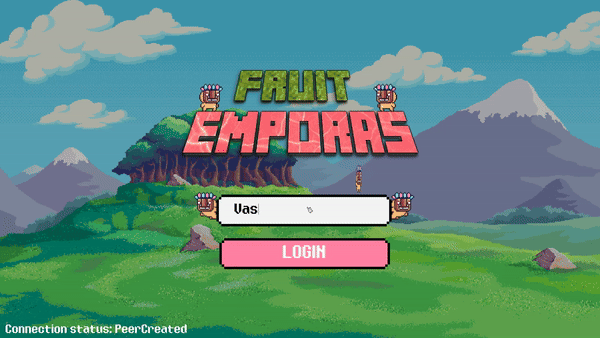
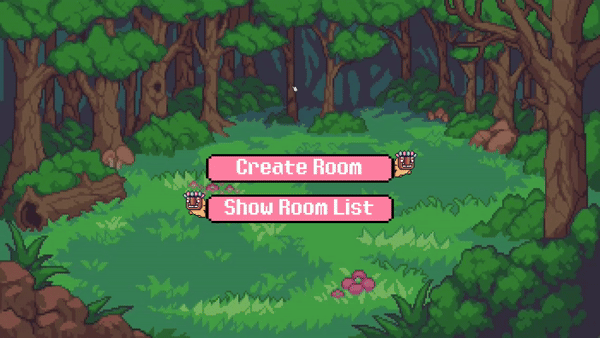
(1) Establishing a network connection within the game - (2) Creating a server room
Sound & UI Design
On top of the game development and the networking integration, for the purposes of this project I had to create different UI elements for the Main Menu and the End Game scene. These elements included the logo of the game, different buttons and various text images.
Lastly, for each event of the game, I used SFX from different sound packs and integrated them correctly in each case. These events included button clicks/errors, typing sounds, movement events SFX, object pick-up sounds etc.


(1) Main Menu - (2) Lobby Scene


(1) Room Creation - (2) End Game Scene & Points Results
General Game Design
Pitch Idea
Due to time restrictions and the purpose of this project, I created a pitch idea (without a GDD) including all the necessary elements for the game, which accompanied the final build of the game.
Overall Game Balance & Project Management
As stated above, the project was created by me and another colleague, where each task & responsibility has been explained in the pitch idea. The overall development lasted for 3 months and the game balancing was focused mostly on the networking integration and the character movement and interactions.
This included elements like optimization of animations and overall feeling of the game, as well as server optimizations and networking registration. We had to make sure that both players had an optimal experience for their interactions and their movement, including their connection to the game.
Lastly, even if the development happened by two people, communication was key to the success of this project, as I kept logs from meetings, assigning and maintaining the Trello board of the game, as well as writing all the necessary info for the game, on top of the development.
Level Design
Utilizing Unity's Tile-map feature allowed us for efficient creation and manipulation of 2D tile-based maps. We designed tile sets containing various tiles for ground, obstacles, fruits and tile points. These tile sets were all pre-made modular assets from external creators, allowing us for easy assembly of them, while we maintained visual quality.
On top of the Tile-map feature, we decided to create each level in a procedural generation process, in order to offer a unique experience for each playthrough. In Unity Engine, we utilized algorithms to generate tile placement, obstacles like traps and fruit spawns dynamically to keep the gameplay fresh and encourage replayability.